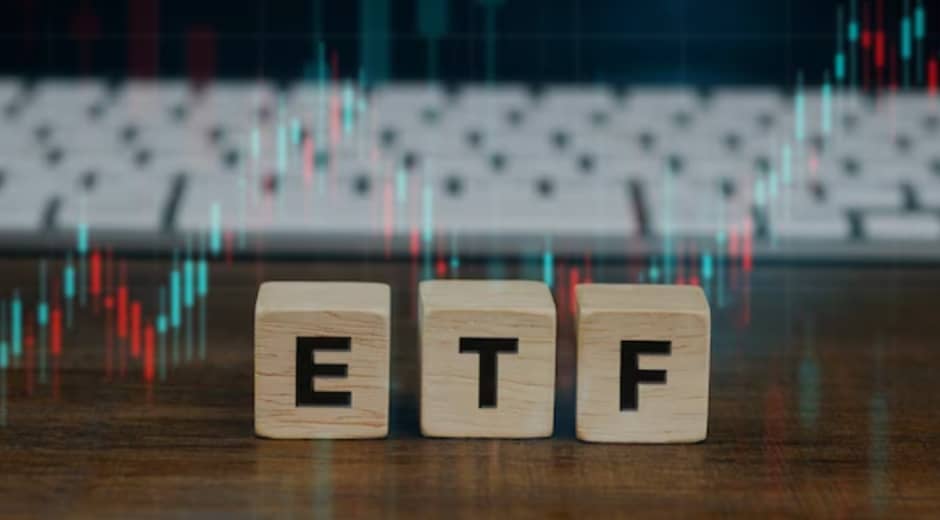SPY Surges Past Key Level — Why Bulls Still Have the Edge
The SPDR S&P 500 ETF (SPY) has recently surged past a critical technical level, sparking renewed optimism among investors. Despite recent market volatility, bulls continue to demonstrate control, indicating the potential for further upward momentum. In this article, we’ll break down the factors driving the SPY’s performance, key technical levels, and why market optimism persists.
1. Understanding the SPY Surge
SPY represents the performance of the S&P 500 index, a benchmark for U.S. equities. Its recent surge past key resistance levels indicates investor confidence in large-cap stocks and overall market resilience.
Key Drivers:
-
Strong earnings reports from leading companies.
-
Positive economic data supporting growth expectations.
-
Institutional buying driving momentum.
Analysts note that surpassing resistance levels often leads to short-term bullish sentiment, creating opportunities for trend-following traders.
2. Technical Analysis: Key Levels to Watch
Technical analysis remains essential for understanding market momentum. SPY recently cleared the $470 resistance level, which had capped rallies for the past month.
Key Indicators:
-
Moving Averages: SPY trading above its 50-day and 200-day moving averages signals bullish dominance.
-
RSI (Relative Strength Index): Currently around 65, indicating healthy bullish momentum without being overbought.
-
Volume Trends: High trading volumes confirm the breakout’s legitimacy.
This combination suggests that bulls maintain the upper hand, even amid broader market uncertainty.
3. Earnings and Sector Strength
The S&P 500’s strength is underpinned by robust corporate earnings and sector-specific rallies. Tech, healthcare, and consumer discretionary sectors have outperformed expectations, providing a strong foundation for SPY.
Notable Contributions:
-
Tech giants: Companies like Apple and Microsoft reported revenue growth exceeding analyst forecasts.
-
Healthcare: Pharmaceutical and biotech firms show resilience amid economic fluctuations.
-
Consumer discretionary: Robust consumer spending continues to support retail and lifestyle stocks.
The breadth of strength across sectors reinforces the bullish case for the SPY.
4. Macroeconomic Tailwinds
Several macroeconomic factors are supporting the SPY’s bullish trajectory:
-
Employment Data: Solid job growth fuels consumer confidence.
-
Inflation Trends: Moderating inflation reduces the likelihood of aggressive Fed hikes.
-
Global Stability: Positive developments in international trade and geopolitics support market optimism.
Investors often view these factors as catalysts for continued gains, particularly when combined with strong corporate fundamentals.
Why These ETFs Stand Out
What makes these funds “breakout” opportunities isn’t just performance — it’s the alignment of narrative, technicals, and capital flow.
-
EUAD – Defense renaissance + European re-industrialization.
-
URA – Nuclear revival and uranium supply squeeze.
-
ARKW – AI and next-gen internet growth acceleration.
-
EWY – Asia tech resurgence + export-driven strength.
Together, they represent four different sectors and regions — yet share one theme: capitalizing on global transformation.
5. Why Bulls Have the Edge
Despite occasional pullbacks, bulls maintain control for several reasons:
-
Momentum: Recent price action demonstrates strong upward momentum.
-
Liquidity: Institutional inflows continue to support large-cap equities.
-
Sentiment: Investor confidence remains elevated amid encouraging economic and earnings data.
-
Technical Support: Key moving averages and trendlines provide strong support levels.
In combination, these factors indicate that upside potential outweighs downside risk in the near term.
6. Risk Factors and Considerations
-
While the bullish case is compelling, investors should remain aware of potential risks:
-
Economic shocks: Sudden changes in interest rates or inflation could reverse trends.
-
Geopolitical uncertainty: Conflicts or trade disruptions may impact markets.
-
Valuation Concerns: Certain sectors may be extended, and selective caution is advised.
Even with these risks, technical trends and institutional support suggest that bulls remain in control.
-
7. Trading Strategies for the Current Environment
For investors seeking to capitalize on SPY’s bullish momentum, several strategies may be considered:
-
Trend Following: Buying pullbacks near support levels can capture upward swings.
-
Options Strategies: Covered calls or bullish spreads can generate income while maintaining upside exposure.
-
Sector Rotation: Focusing on leading sectors, like technology and consumer discretionary, may maximize returns.
Risk management is key, including setting stop-loss levels and monitoring macroeconomic developments.
8. SPY in the Context of Broader Markets
The SPY’s performance often reflects broader market sentiment:
-
Equity Markets: Large-cap stocks drive index performance, while mid and small-cap trends can indicate early shifts.
-
Bonds and Interest Rates: Yield movements influence investor allocations between equities and fixed income.
-
Global Indices: SPY often correlates with other global benchmarks, providing insights into international market sentiment.
By tracking these relationships, investors gain a clearer picture of where SPY might head next.
9. Expert Opinions
Leading analysts emphasize that SPY’s breakout is supported by both technical and fundamental factors.
-
Some see the breakout as a precursor to new all-time highs, citing liquidity, earnings growth, and strong market breadth.
-
Others advise caution, noting that short-term pullbacks are normal after extended rallies.
Balancing these perspectives helps investors make informed decisions while staying aligned with broader market trends.
10. Conclusion: The Bulls Still Lead
Leading analysts emphasize that SPY’s breakout is supported by both technical and fundamental factors.
-
Some see the breakout as a precursor to new all-time highs, citing liquidity, earnings growth, and strong market breadth.
-
Others advise caution, noting that short-term pullbacks are normal after extended rallies.
Balancing these perspectives helps investors make informed decisions while staying aligned with broader market trends.
Education Made Simple

Blue Chip Stocks in 2025: Resilience, Reliability, and Real Growth
Blue Chip Stocks in 2025 remain pillars of market stability and growth, offering investors security, dividends, and consistent long-term value.

Index Funds in 2025: The Timeless Strategy Thriving in a New Financial Era
Index Funds in 2025 remain a cornerstone of smart investing, balancing simplicity, diversification, and steady returns in a volatile market environment.

Natural Gas in 2025: Balancing Energy Demand and Sustainability
Natural Gas in 2025 plays a pivotal role in global energy transition, balancing affordability, sustainability, and reliability amid evolving markets.

Tokenization in 2025: Redefining Ownership in the Digital Economy
Tokenization in 2025 transforms how assets are owned, traded, and valued, bringing transparency and liquidity to global financial systems.

Earnings Season 2025: What Investors Should Watch for in a Shifting Market
Earnings Season 2025 reveals how corporate results are shaping market confidence, guiding investors through volatility and economic transition worldwide.

Dividend ETFs in 2025: Consistent Income for a Volatile Market
Dividend ETFs in 2025 offer stability and passive income amid market uncertainty, helping investors balance risk and long-term returns effectively.

Copper’s Comeback: Why the Red Metal Is Powering the Next Global Boom
Copper’s comeback in 2025 is reshaping global industries as the red metal fuels electric vehicles, green tech, and infrastructure growth worldwide.

Stablecoins in 2025: The Bridge Between Traditional Finance and Digital Trust
Stablecoins in 2025 are redefining trust between crypto and traditional finance, offering stability, faster payments, and global accessibility for investors.

October Stocks: Market Trends and Investment Insights
October Stocks provide a detailed view of market trends, sector performance, and investment opportunities for the month. Explore insights, analysis, and strategies for optimizing portfolios in October.

Cybersecurity ETFs: Safeguarding Portfolios in the Digital Era
Cybersecurity ETFs allow investors to access a diversified portfolio of companies protecting critical digital infrastructure. Learn market trends, growth drivers, and strategies for investing in this essential sector.

Cobalt Supply Chain: Navigating Risks and Opportunities in Global Commodities
The cobalt supply chain underpins the production of batteries, electric vehicles, and advanced technologies. This analysis explores market dynamics, supply risks, and investment opportunities shaping the global commodities landscape.












